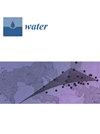Aquatic Microplastic Pollution Control Strategies: Sustainable Degradation Techniques, Resource Recovery, and Recommendations for Bangladesh
IF 3
3区 环境科学与生态学
Q2 ENVIRONMENTAL SCIENCES
引用次数: 4
Abstract
Microplastics’ dangers and the absence of effective regulation technologies have risen to prominence as a worldwide issue in recent years. South Asian countries, such as Bangladesh, are among the most threatened nations to face the drastic consequence of releasing microplastics into the aquatic environment. The research on managing and degrading microplastics is ongoing, however, sustainable techniques have not yet been found. To create a green and efficient microplastic management plan, we have compiled all the information on the existing removal and degradation techniques for microplastics and provided an overview of all the noteworthy methods that can be implemented in Bangladesh. In the portrayed biotic and abiotic techniques, coagulation and photocatalysis were found to be most efficient in removing microplastics (as high as 99%) in different studies. The concept of microplastic is new to the researchers of Bangladesh, therefore, the characteristics, occurrence, fate, and threats are briefly discussed in this paper. Sampling, extraction, and identification methods of microplastic in freshwater and sediment samples are also thoroughly specified. The sources of microplastic pollution in Bangladesh and possible strategies that can be implemented to minimize additional microplastic discharge into aquatic environments are discussed. Although Bangladesh was the very first country to ban polythene, the failure of the implementation of rules and regulations and a lack of management strategy made Bangladesh the 10th worst country in managing plastic waste. This work is a wake-up call for other researchers to conduct an in-depth investigation to improve microplastic degrading technologies and develop a sustainable strategy to end microplastic pollution in Bangladesh.水生微塑料污染控制策略:可持续降解技术、资源回收和孟加拉国建议
近年来,微塑料的危险性和缺乏有效的监管技术已成为一个全球性问题。孟加拉国等南亚国家是面临向水生环境释放微塑料的严重后果的最受威胁的国家之一。管理和降解微塑料的研究正在进行中,但尚未找到可持续的技术。为了制定一个绿色高效的微塑料管理计划,我们汇编了关于现有微塑料去除和降解技术的所有信息,并概述了孟加拉国可以实施的所有值得注意的方法。在所描述的生物和非生物技术中,在不同的研究中,发现混凝和光催化在去除微塑料方面最有效(高达99%)。微塑料的概念对孟加拉国的研究人员来说是新的,因此,本文简要讨论了微塑料的特征、发生、命运和威胁。还详细规定了淡水和沉积物样品中微塑料的取样、提取和鉴定方法。讨论了孟加拉国微塑料污染的来源以及可以采取的策略,以尽量减少向水生环境中额外排放的微塑料。尽管孟加拉国是第一个禁止使用聚乙烯的国家,但由于未能执行规章制度和缺乏管理战略,孟加拉国在塑料垃圾管理方面排名第十。这项工作给其他研究人员敲响了警钟,让他们进行深入调查,以改进微塑料降解技术,并制定可持续战略,结束孟加拉国的微塑料污染。
本文章由计算机程序翻译,如有差异,请以英文原文为准。
求助全文
约1分钟内获得全文
求助全文
来源期刊

Water
WATER RESOURCES-
CiteScore
5.80
自引率
14.70%
发文量
3491
审稿时长
19.85 days
期刊介绍:
Water (ISSN 2073-4441) is an international and cross-disciplinary scholarly journal covering all aspects of water including water science and technology, and the hydrology, ecology and management of water resources. It publishes regular research papers, critical reviews and short communications, and there is no restriction on the length of the papers. Our aim is to encourage scientists to publish their experimental and theoretical research in as much detail as possible. Full experimental and/or methodical details must be provided for research articles. Computed data or files regarding the full details of the experimental procedure, if unable to be published in a normal way, can be deposited as supplementary material.
 求助内容:
求助内容: 应助结果提醒方式:
应助结果提醒方式:


